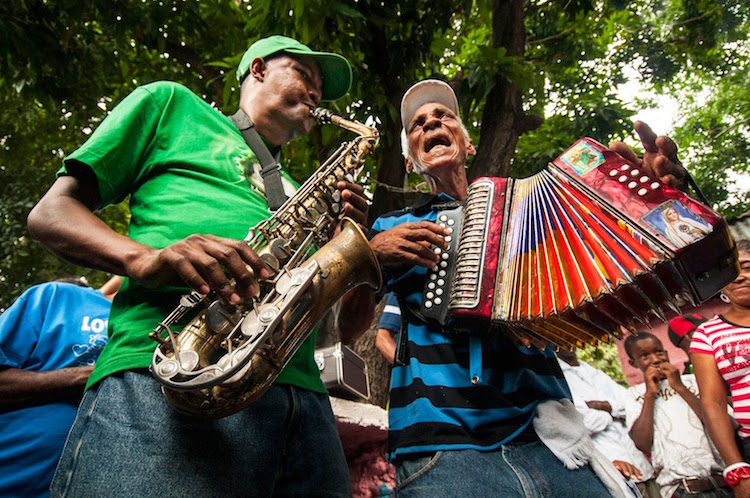
By A.D. McKenzie
PARIS (IDN | SWAN) – Many people know of UNESCO’s World Heritage Sites, which include structures such as China’s Great Wall and Tanzania’s Stone Town of Zanzibar – “places on earth that are of outstanding universal value to humanity” – but fewer perhaps know of the UN agency’s Intangible Cultural Heritage List.
This is an international register of cultural practices that are important for communities, in both traditional and modern ways, and 171 UNESCO member states have ratified a convention to safeguard these types of customs.
For ten years now, since the convention came into force in 2006, UNESCO’s Intangible Heritage Committee has met annually to choose nominees for inscription on the List, and next week members are meeting in Ethiopia to focus on traditional songs, rituals, celebrations and, in one case, beer drinking.
According to UNESCO, Belgium has put forward its beer-drinking culture for inscription on the Representative List, stating that “making and appreciating beer is part of the living heritage of a range of communities throughout” the country.
“It plays a role in daily life, as well as festive occasions,” says the Belgian submission. “Almost 1,500 types of beer are produced in the country including by some Trappist [monk] communities.”
The submission from Belgium is among 37 requests for inscription on the Representative List of the Intangible Cultural Heritage of Humanity (ICH), with others including rumba in Cuba, the Tahteeb stick game in Egypt, yoga in India, merengue music and dance in the Dominican Republic, a fishing festival in Nigeria, and traditional wooden-boat making in Norway.
“An essential criterion for the list is community,” said Tim Curtis, a cultural anthropologist and chief of UNESCO’s section on ICH. “The community voice takes precedence over the expert voice in this area.”
The Representative List so far numbers 336 inscribed elements and aims “to enhance the visibility of communities’ traditions and knowledge without recognising standards of excellence or exclusivity,”, says UNESCO.
In an interview, Curtis said that another key aspect in the consideration for inclusion on the List is the “inter-generational transmission” of the custom.
“As well as a historical or traditional function, it should have a future role as well,” he said. “I see it as an approach to heritage that’s forward-looking, something that tends towards continuity.”
The Committee, meeting from Nov. 28 to Dec. 2 in Addis Ababa, comprises the representatives of 24 of the countries that have ratified the convention, and its members will equally examine five nominations for inscription on the List of Intangible Cultural Heritage in Need of Urgent Safeguarding.
Among these are Portugal’s Bisalhães black pottery manufacturing process, whose future is “under threat” because of waning interest; and Uganda’s Ma’di “bowl lyre music and dance”, one of the oldest cultural practices of the country’s Ma’di people that is considered at risk – mainly because younger people think it “old-fashioned” and the materials used come from species that are currently endangered.
UNESCO said that the Committee will also examine issues concerning intangible heritage in emergency situations caused by conflict or natural disaster. It will “envisage safeguarding measures that can be applied in such cases and consider the role intangible heritage can play in restoring social cohesion and supporting reconciliation,” the agency said.
Curtis explained that the Committee will furthermore look into the creation of a “monitoring instrument” to measure the convention’s impact and the progress achieved over the past 10 years.
“The real impact of the convention is whether countries are setting up programmes to protect intangible heritage,” he said.
The fact that 171 “state parties” have ratified the convention at such a fast rate does show some commitment, according to culture experts, but there has to be action at the national level as well, even when it is practitioners of the custom that submit it for inclusion on the List.
Belgium’s beer-drinking culture was submitted by its German-speaking community, on behalf of all three of the country’s language groups, because “beer-drinking is an integral part of the country’s culture”, said spokesman Dirk Vandriessche.
“It’s really about the culture, and not about beer, and it’s important to make that distinction,” he said in a telephone interview. “Every festivity is with beer.”
While this culture has long had hosts of admirers and seems at no risk of being swallowed up by modernisation, other customs and practices – such as rumba – may need greater support and recognition, especially because of their traditional importance.
“Rumba in Cuba, with its chants, movements, gestures and music, acts as an expression of resistance and self-esteem while evoking grace, sensuality and joy to connect people,” says the Cuban submission.
It adds that the music and dance are associated with African heritage but also features elements of Antillean culture and Spanish flamenco, reflecting significant historical movements. [IDN-InDepthNews – 24 November 2016]
Note: This article first appeared on November 23, 2016 in SWAN – Southern World Arts News – an online cultural magazine devoted to the arts of the global South, and is being reproduced by arrangement with the editor.
Follow SWAN on Twitter: https://twitter.com/mckenzie_ale (@mckenzie_ale)
Photo: Merengue musicians in the Dominican Republic. Credit: Ministry of Culture
IDN is flagship agency of the International Press Syndicate.

